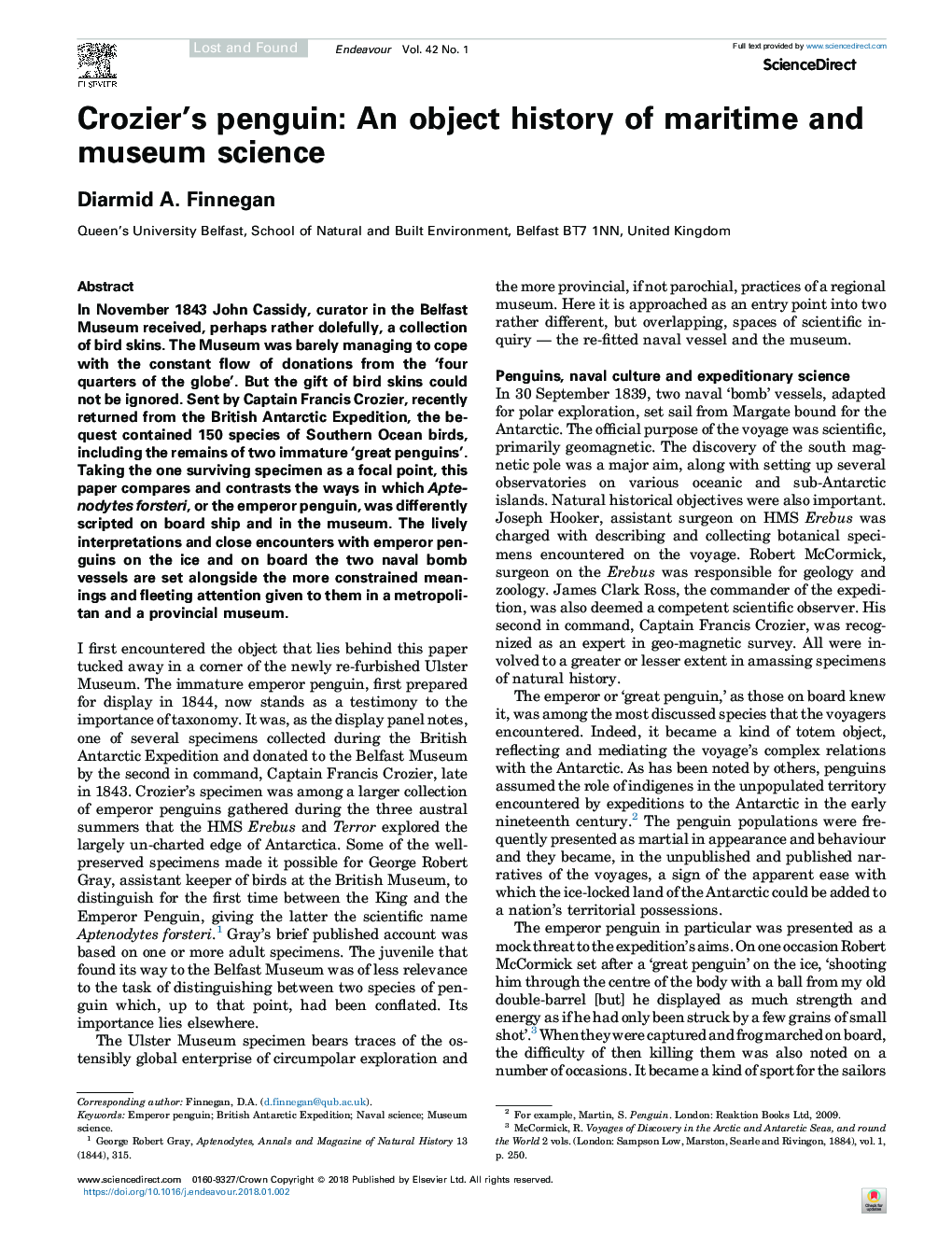| Article ID | Journal | Published Year | Pages | File Type |
|---|---|---|---|---|
| 7550877 | Endeavour | 2018 | 6 Pages |
Abstract
In November 1843 John Cassidy, curator in the Belfast Museum received, perhaps rather dolefully, a collection of bird skins. The Museum was barely managing to cope with the constant flow of donations from the 'four quarters of the globe'. But the gift of bird skins could not be ignored. Sent by Captain Francis Crozier, recently returned from the British Antarctic Expedition, the bequest contained 150 species of Southern Ocean birds, including the remains of two immature 'great penguins'. Taking the one surviving specimen as a focal point, this paper compares and contrasts the ways in which Aptenodytes forsteri, or the emperor penguin, was differently scripted on board ship and in the museum. The lively interpretations and close encounters with emperor penguins on the ice and on board the two naval bomb vessels are set alongside the more constrained meanings and fleeting attention given to them in a metropolitan and a provincial museum.
Keywords
Related Topics
Social Sciences and Humanities
Arts and Humanities
History
Authors
Diarmid A. Finnegan,
